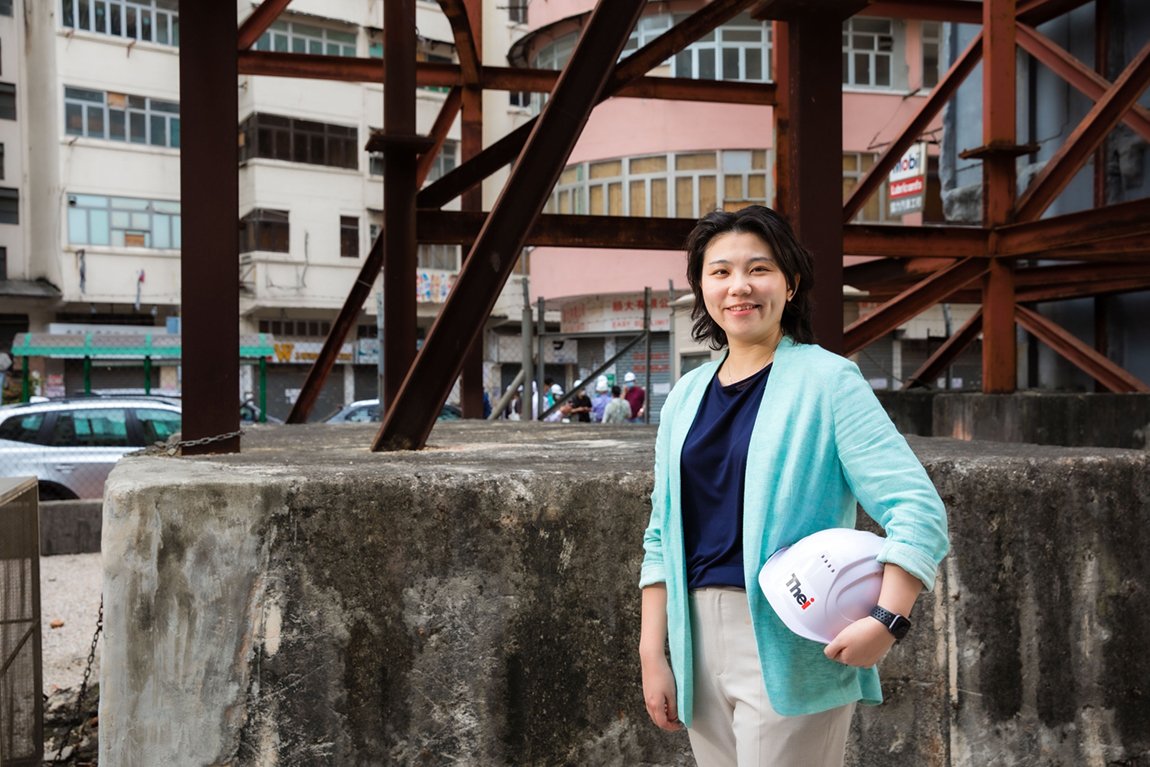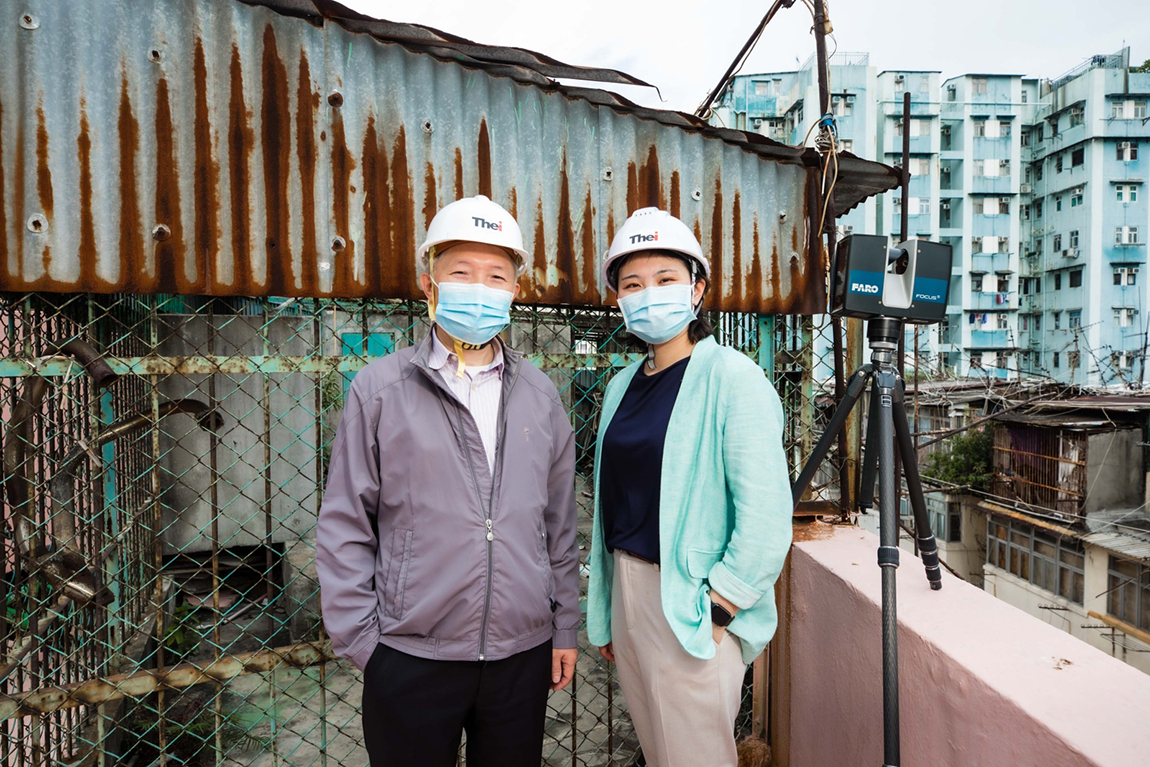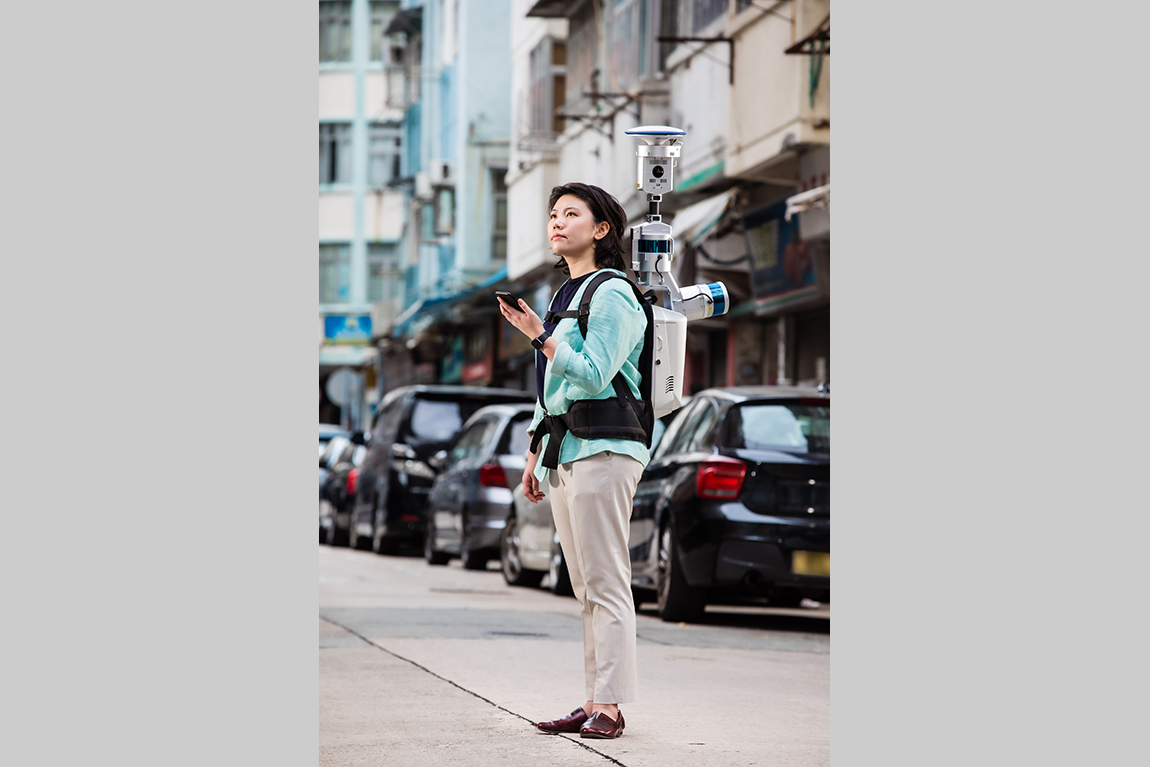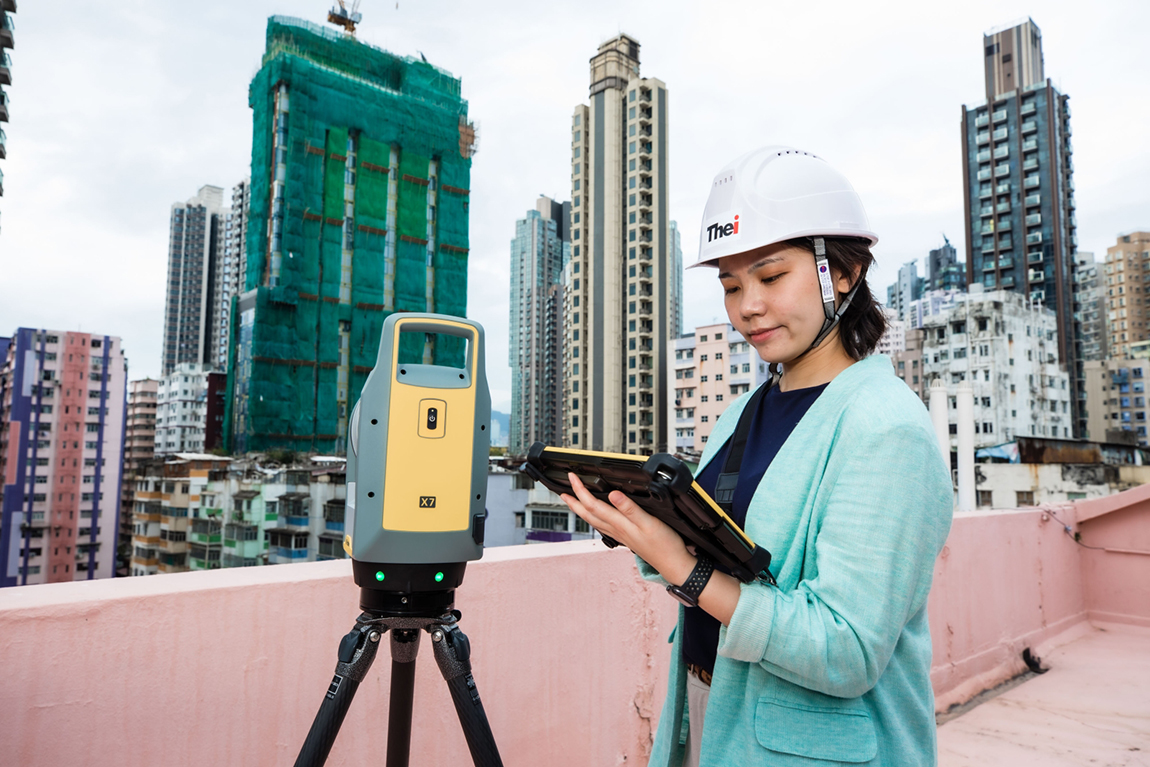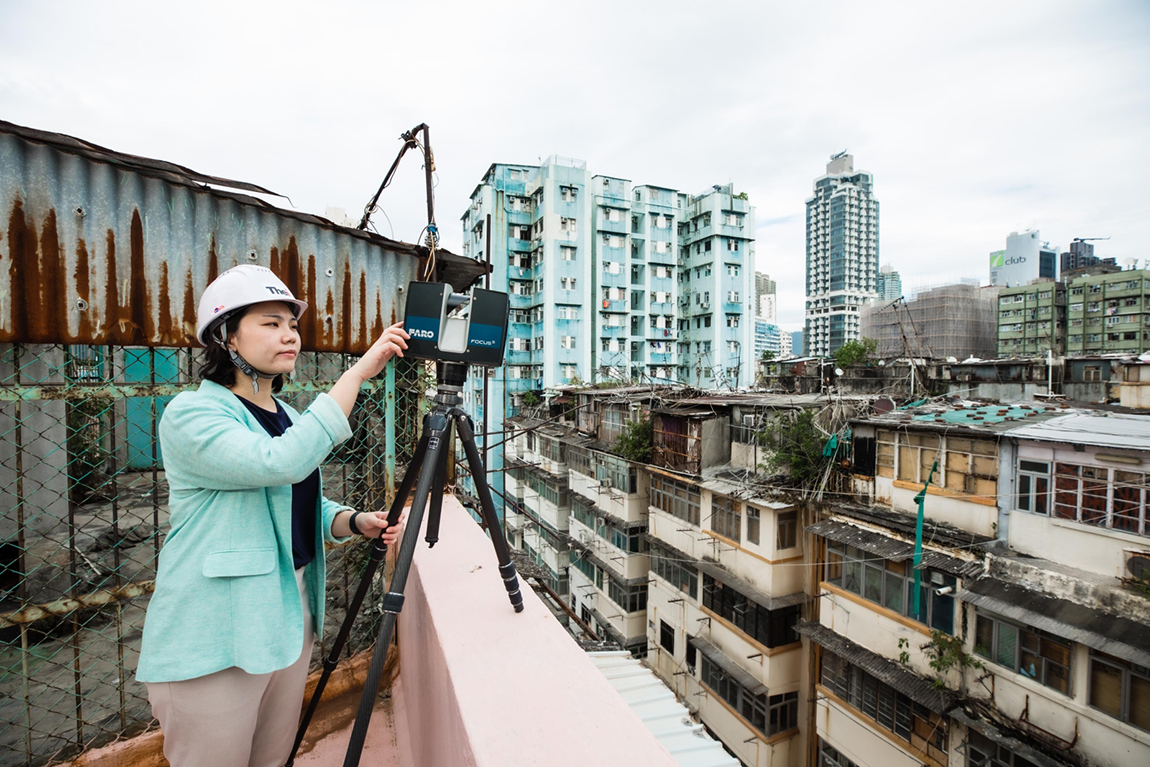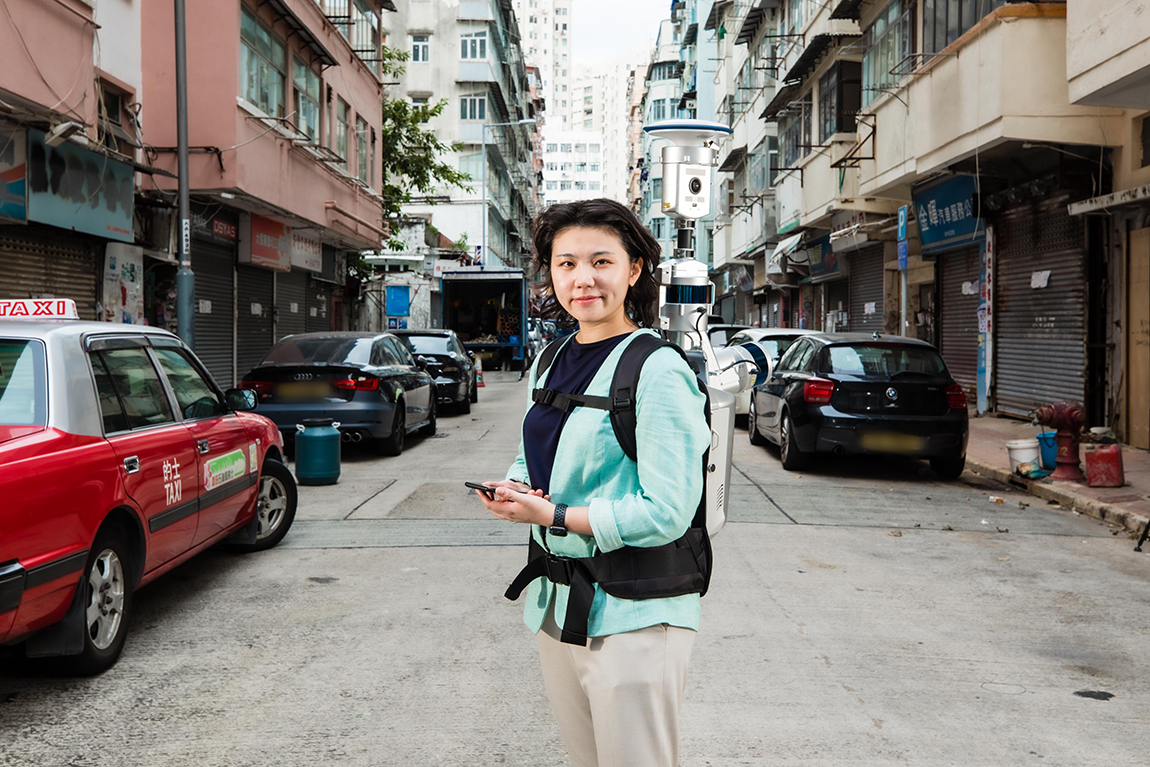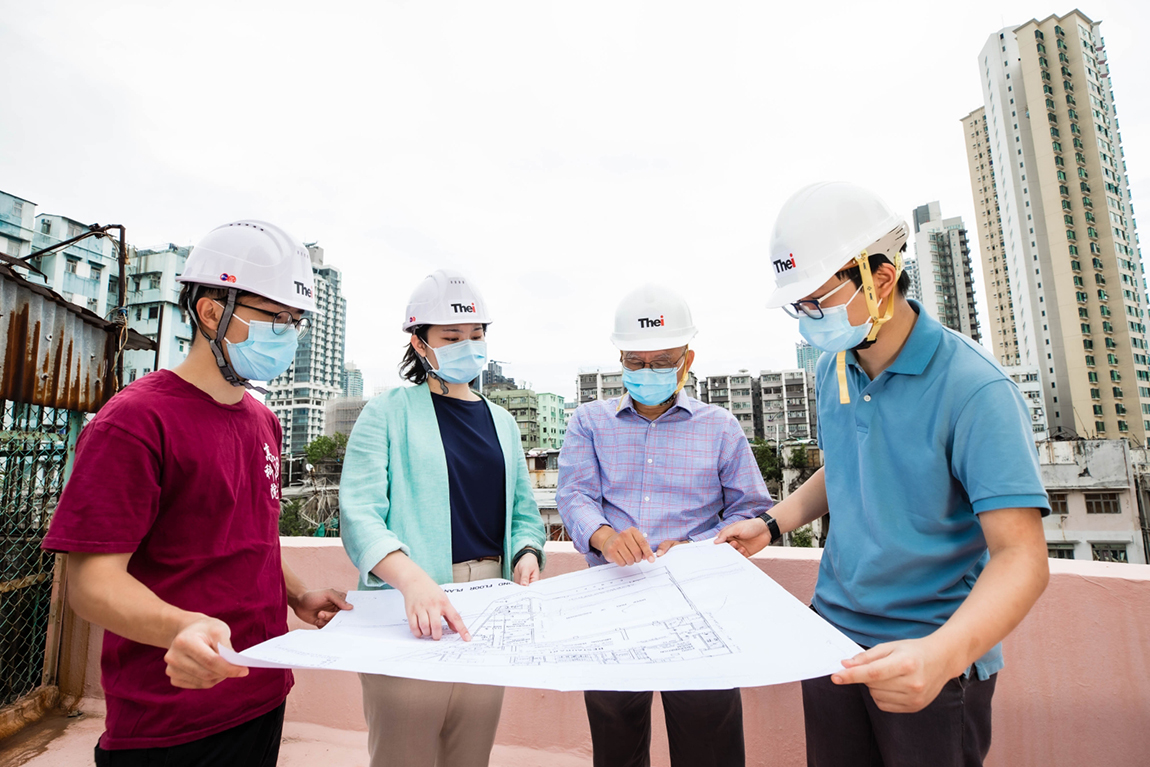THEi surveying student offered job prior to graduation on her strength of professional Scan-to-BIM technology
-
The COVID-19 pandemic has transformed the operational modes of different industries and expedited the process of digitisation. The surveying profession, among others, actively seeks to advance in applying the state-of-the-art Scan-to-BIM technology. This new technology helps make drawings of aged buildings and effectively reduces the clustering of working staff during the pandemic, both of which are instrumental in enabling the profession to thrive in the “new normal”. Sophie LUK Yu-yan, a final year student of the Bachelor of Science (Honours) in Surveying programme with the Technological and Higher Education Institute of Hong Kong (THEi), has put the Building Information Modelling (BIM) technology that she learnt in THEi into practice. It has stood her in good stead in securing employment in times of the pandemic. She has already been hired by an international quantity surveying consultancy prior to graduation. She is on track to achieving her dream career as a professional quantity surveyor.
With the thrust of digitisation in recent years, the surveying profession has been keen to adopt state-of-the-art digital technologies in traditional professional tasks. This included using drones to assist with land surveying and mapping, building inspection, as well as applying BIM technology to project management, production of construction and as-built drawings, which go a long way beyond raising the overall efficiency of the profession.
Making good use of technologies to reduce agglomeration of staff
Sophie’s final year dissertation focuses on the way the innovative technology, “Scan-to-BIM”, can be applied to accomplish the surveying work of an aged building in To Kwa Wan, Kowloon. She said, “There are currently a large number of aged buildings 50 to 60 years old in Hong Kong. Drawings of those buildings are either lost or incomplete. We only need three staff and about one working day if the Scan-to-BIM technology is applied to complete the scanning exercise of the images of a six-storey aged building.”Sophie went on to say that the surveying staff just need to use computer software to produce a 3D drawing out of the scanned images. It saves manpower, raises efficiency and enhances accuracy of the surveying data. This in turn helps the quantity surveyors make precise estimates, greatly reducing the project cost and incidents of variations in the construction work.
Amid the pandemic, many enterprises rack their brains to minimise the clustering of personnel at work to reduce transmission risk. Sophie found Scan-to-BIM tools light in weight, easy to use and cost effective. The innovative technology is being adopted in more and more surveying projects. Better still, fewer staff are needed on-site.
Skill-enabled employment amid the pandemic
Associate Dean of the Faculty of Design and Environment and Professor of the Department of Environment of THEi, Professor Daniel HO Chi-wing, points out that Scan-to-BIM is an advanced technology that has been matured and introduced to the surveying profession only in recent years. It mainly collects, by way of a 3D laser scanner, digital data on the exterior and location of a building to enable a 3D model can be constructed at an early stage to facilitate the alterations and addition works of an existing building. It also facilitates the production of the final as-built drawings of a building upon completion and provides updatable drawings and information for subsequent facilities management operations.Professor Ho remarks that as Scan-to-BIM is a specialised technology that requires knowledge and operation of advanced devices and techniques, it is still quite a new thing to the surveying profession in Hong Kong. “Right now, not many people in the profession know of this technology let alone to operate the tools and the associated software. Given that application of innovative technologies has become a major trend for the advancement of the surveying profession, the right talent is highly sought-after.”
During her study at THEi, Sophie had the opportunity to learn digital surveying theories and applications, which helped sharpen her competitiveness for employment. Graduating next year, she has already been engaged as a trainee with an international quantity surveying consultancy on the strength of her outstanding performance at THEi, and is due to become a formal employee of the company after graduation.
Recalling her learning experiences, Sophie passed over business administration (BA) for surveying. Out of an interest in surveying, she enrolled in THEi’s surveying degree programme. Sophie says, “THEi’s surveying programme is closely attuned to practical requirements of the surveying profession and brings me invaluable internship opportunities, which are conducive to my joining the surveying profession after graduation.”
Professor Ho points out that there are currently about 7,000 professional surveyors in Hong Kong. Despite the pandemic, the surveying profession still has an urgent need for talent and ample opportunities are available for young people. Sophie, who has secured a job before she has graduated, is a good example.
Sophie is brimming with optimism and believes the surveying profession places an even greater premium on talented people equipped with digital skills in the “new normal”. Looking ahead, she aspires to accumulate more work experience and then pursue the qualification of a professional quantity surveyor, contributing to the real estate development for the community.










